A Deep Dive into Twilight Princess on Wii U
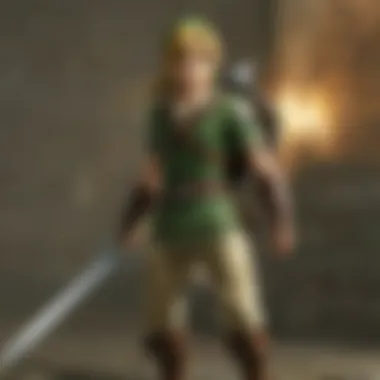
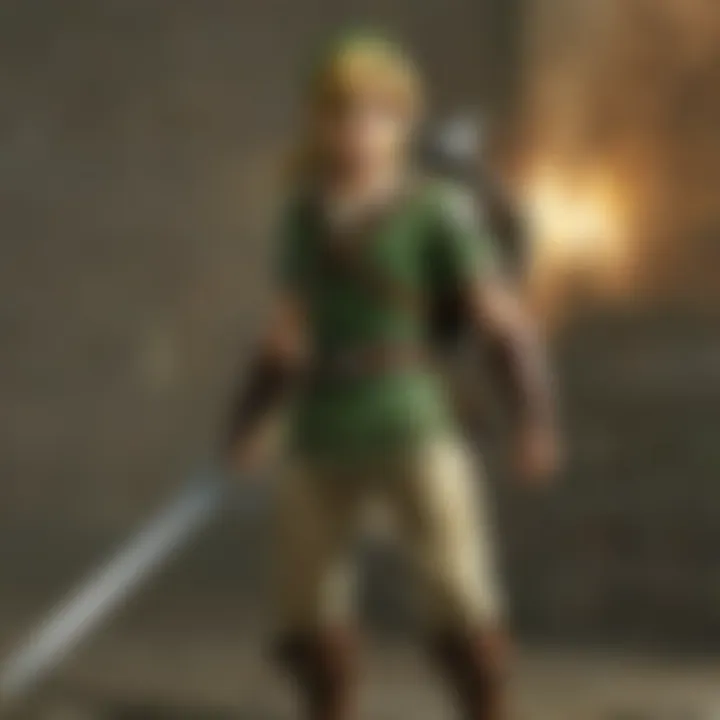
Intro
The realm of Hyrule is rich with stories, characters, and lore that have captivated gamers for decades. Among these tales, Twilight Princess stands out, especially on the Wii U. This title offers not merely an adventure but a journey through dark themes and intricate narratives. In this analysis, we will unpack the unique gameplay, narrative structure, character arc, and philosophical depths of Twilight Princess. Together, we’ll also look at how the game fit into the vast tapestry that is the Zelda franchise and its impact on the gaming community.
Game Reviews
Gameplay Features and Mechanics
Twilight Princess introduces a blend of classic Zelda mechanics with fresh innovations. One of the game's defining elements is the transformation mechanic, where Link shifts into a wolf form. This adds a layer of complexity to gameplay, as each form offers unique abilities—scent tracking with the wolf and wielding the Master Sword as a human.
Detailed puzzles litter the game’s dungeons, often requiring players to think outside the box. For instance, using the wolf's ability to see spirits reveals secrets hidden from human eyes, seamlessly integrating the two forms. The combat, although familiar, presents new challenges like the Stalfo enemies, demanding strategic thinking from players.
"The fusion of wolf and human gameplay redefined how players interact with the world and its challenges."
Storyline and Quests
The story of Twilight Princess is undeniably darker than its predecessors. The tale begins with Link in a small village, only to find himself embroiled in a larger conflict involving the Twilight Realm. An oppressive darkness looms, and the player witnesses characters experiencing fear, loss, and determination.
The quests are richly layered, compelling players to engage not just in battle but also in understanding each character's motivations. Link’s journey is marked by the pursuit of not only console but also redemption, making his character arc emotionally resonant.
Visuals and Sound Design
When we talk visuals, the art style of Twilight Princess leans toward a more realistic representation of Hyrule. The Wii U enhances this experience with improved resolution, where lighting plays a crucial role in evoking atmosphere. Each location, from the lush fields of Hyrule to the desolate Shadow Realm, has a distinct character, presenting a world that feels alive.
The soundtrack features haunting melodies that echo through the gameplay, reinforcing the emotional weight of key scenes. Each dungeon’s theme enhances the visual experience, building tension and excitement, making the experience all the more memorable.
Comparison with Previous Titles
When we pit Twilight Princess against earlier installments, it draws parallels and contrasts in several areas:
- Tone: Unlike the playful energy of Ocarina of Time, Twilight Princess adopts a more somber narrative.
- Gameplay: The puzzles are more intricate, requiring deeper engagement than the simpler designs in The Wind Waker.
- Character Development: Characters in Twilight Princess, such as Midna and Zant, are more fleshed out, showcasing complex motivations that enrich the overall story.
This title sets itself apart, creating a bridge between the stylized worlds of Wind Waker and the grittier Skyward Sword, paving the way for the series' evolution.
Character Analyses
Popular Characters Overview
The heart of Twilight Princess lies in its characters. Link, of course, plays the courageous hero role, but the richness of the story derives also from intricate characters like Midna, the enigmatic princess of the Twilight Realm, and Zant, the villain with a constantly shifting motive. Each character comes with their distinct traits that contribute to the game’s unfolding narrative.
Character Development and Backstories
Midna’s character development is profound. Beginning as an aloof guide, she transforms into a deeply nuanced ally, forging a connection with Link that impacts the game's emotional tone. Likewise, Zant’s backstory adds layers to his villainy, making players question what drives him to madness.
Role in the Zelda Universe
Characters in Twilight Princess hold significance not just within their game but across the larger Zelda lore. Midna, with her boundless spirit, and Link’s unwavering resolve resonate throughout the series, reflecting recurring themes of courage, friendship, and sacrifice.
Fan Theories and Speculations
The community surrounding the Zelda series thrives on theories, often venturing to link characters and events across games. Fans speculate about connections between Midna and other characters from different timelines. These discussions highlight the depth of storytelling that Twilight Princess brings to the franchise.
Lore Discussions
Mythology and Worldbuilding
The world of Twilight Princess deeply intertwines mythology with its own brand of worldbuilding. The intricate history of Hyrule is explored through the various realms, including the Twilight Realm, which is especially significant. Stemming from folklore patterns, it examines duality themes, light versus darkness, and the balance between worlds.
Legendary Items and Artifacts
Various artifacts enrich the gameplay and narrative, most notably the Master Sword and the fused shadows. Each item carries weight, historically and contextually, linking back to the broader Zelda mythos.
Link to Real-world Mythologies


Interestingly, elements in Twilight Princess take cues from real-world mythology, particularly in its duality concepts and moral dilemmas. This interplay makes the narrative not just a fantastical tale but also an exploration of human philosophies.
Timeline Placement and Theories
The place of Twilight Princess within the series' timeline invites much discussion. Speculation abounds regarding its position relative to titles like Ocarina of Time and Majora's Mask. It challenges players to ponder the continuity and evolution of both the world and its characters.
Gameplay Strategies
Combat Techniques and Tips
Combat in Twilight Princess requires a mix of finesse and strategy. Utilizing Link's skills, such as the Counter attack and Spin Attack, can turn the tide during engagements. Leveraging both wolf and human forms during combat against diverse foes proves critical for success.
Puzzle Solutions and Walkthroughs
The puzzles are often tricky but rewarding. For example, utilizing Link’s bow to activate distant levers or using the wolf’s tracking ability to uncover hidden routes can unlock new areas and treasures. Mastery of the environment is key to navigating through perilous dungeons.
Collectibles and Side Quest Guides
Exploring Hyrule wouldn’t be complete without hunting for collectibles. Gathering Golden Bugs or Howling Stones enriches the experience. In addition, completing side quests—like helping villagers—breathes life into the world and ultimately aids in character development.
Boss Battles Tactics and Strategies
Boss battles in Twilight Princess stand out for their intricate patterns and strategies. Each battle, notably against foes like Ganondorf or Twilight Princess itself, requires the player to observe and adapt, often employing all skills acquired throughout their journey. Identifying attack patterns and exploiting each boss's weaknesses is the road to victory.
Prolusion to Twilight Princess
When we delve into Twilight Princess, we aren’t just discussing another installment of the Legend of Zelda franchise. This title marked a significant pivot in the series, merging the past lore with innovative gameplay mechanics that fans had come to cherish over the years. For many, Twilight Princess is a nostalgic journey back to the enthralling world of Hyrule, where light and darkness intertwine. In this exploration, we will uncover the layers of its historical context and development insights that shaped this memorable game.
Historical Context
To value what Twilight Princess brought to gamers, it helps to understand the state of the gaming landscape at the point of its release. Launched in 2006, this game emerged amidst the growing popularity of dual-genre titles combining action with intricate storylines. The shift to more mature themes in gaming was palpable, and Twilight Princess tapped into this transition beautifully. It wasn’t just about saving a princess anymore. The plot was darker, with a narrative that delved into the complexity of light versus shadow, both thematically and visually. The game was repositioned amidst titles that offered a grittier take on established franchises.
By this stage, the functionality of games had also transformed swiftly, with advancements in graphics and storytelling techniques. Twilight Princess was released on the GameCube and the Wii, but it was during the Wii U that the title found renewed life. This move brought nostalgia while also testing the waters of new innovations in gameplay and visual presentation.
Development Insights
The making of Twilight Princess is a testament to the careful consideration developers applied in crafting not just a game, but an experience. The creators at Nintendo, driven by a desire to respond to the mixed reception of Wind Waker, embraced a more realistic art style for this project. This gave the game a rich, immersive aesthetic that echoed the darker, moody themes within.
One of the fascinating aspects during development was the integration of the Wii U GamePad functionality, which emerged later. This technology allowed for more fluid item management and navigation, distinguishing Twilight Princess from its predecessors.
In fact, the gameplay focused heavily on duality. You could seamlessly switch between Link’s human and wolf forms, an idea that wasn’t just a gimmick but a core mechanic that added depth to the gameplay. This aspect of transformation reflected a greater thematic element – the constant push and pull between light and dark.
"Twilight Princess isn't just a game about saving Zelda; it's about the choices we make and the personas we embrace along the journey."
In summary, understanding the historical context and development process behind Twilight Princess sets the foundation for appreciating its profound impact on players. It remains an essential piece of the Zelda tapestry, carefully weaving together threads of gameplay, story, and artistic expression that continue to resonate within the gaming community.
Gameplay Mechanics
The gameplay mechanics of Twilight Princess are central to understanding its charm and ongoing appeal. Within this game, mechanics do not merely exist to facilitate progress; rather, they serve as conduits through which players experience the rich narrative, immerse themselves in the expansive world, and grow attached to the characters. Each element of the gameplay, from combat to puzzle-solving, is intricately designed to weave together the thematic undertones of courage, sacrifice, and the eternal struggle between light and darkness.
Core Mechanics Overview
At the heart of Twilight Princess lies its core mechanics, which provide the fundamental interactions that underpin the entire experience. The game successfully melds action, exploration, and storytelling. Players control Link, the protagonist, as he fights adversaries, interacts with numerous characters, and navigates a sprawling world. A notable aspect is how the mechanics shift depending on the player's current form, either that of the human Link or his wolf counterpart, creating a seamless transition that enhances fluidity in gameplay.
Combat System
Combat in Twilight Princess stands out as more than just a means to defeat enemies; it reflects the growth and learning curve of the player. Players engage with a mix of swordplay, special skills, and the unique use of items such as the bow or bombs. The intuitive controls make it easy for players to execute powerful moves, yet there remains depth for those willing to master the timing and strategy involved. Furthermore, encounters with various boss characters often require players to adapt their tactics, introducing layers of challenge, which keeps the gameplay engaging without it feeling overly punishing.
Puzzle Integration
One of the highlights in Twilight Princess is its well-crafted puzzles that serve not only to challenge the player but to enrich the overall narrative experience. The puzzles are interwoven into the dungeons and even the overworld, often requiring players to think critically and experiment with the tools at their disposal. From manipulating light to navigate through the Twilight Realm to utilizing items like the boomerang to hit multiple switches, these challenges deepen the gameplay and invite innovation. Successful puzzle-solving creates a satisfying sense of accomplishment while often unveiling portions of the story.
Exploration Dynamics
Exploration is another crucial component of gameplay. Twilight Princess encourages adventurers to roam Hyrule’s vast landscapes, which are filled with hidden treasures and secrets. The game rewards curiosity, whether by discovering a hidden cave or stumbling upon a unique character with tales to tell. The diverse environments—from sprawling fields to shadowy forests—add to the overall sense of adventure. Exploration offers the thrill of discovery, aligning beautifully with the game’s themes of light overcoming darkness.
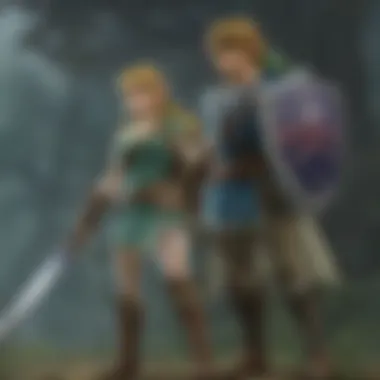
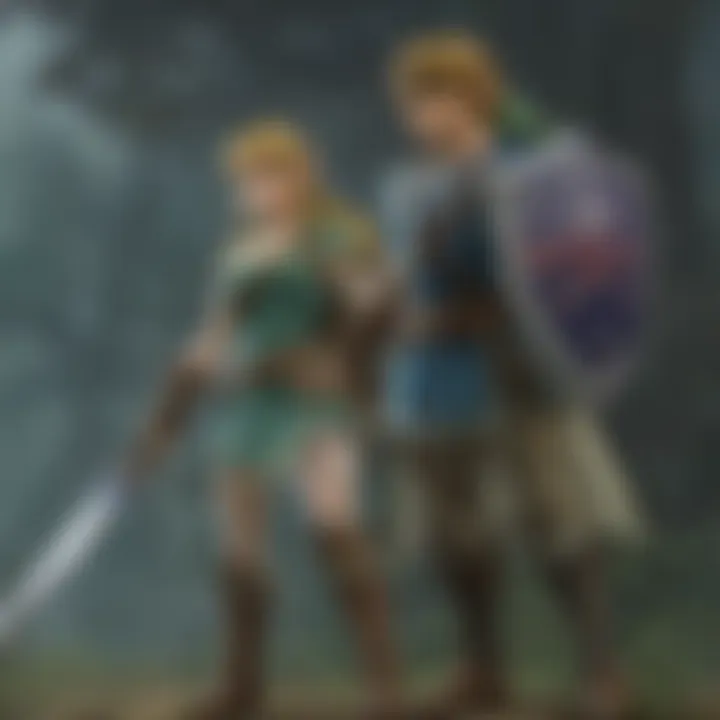
Traversal and Transformation Mechanics
Link's Wolf Form
Link’s transformation into a wolf is particularly significant for various gameplay elements. This mechanic not only broadens the range of abilities available to players—such as enhanced senses for tracking scents or digging in specific areas—but also deepens the narrative connection to the Twilight Realm. The wolf form brings a new gameplay fabric that contrasts with Link’s human abilities. While some players may find the combat options more limited in wolf form, the unique interactions with the environment can make up for it, providing a fresh perspective through which to experience Hyrule's world.
Using Items for Navigation
The use of items for navigation showcases another layer of creativity in gameplay. Instead of merely adhering to a linear path, players can deploy various items and tools to overcome obstacles. For example, using the Clawshot to grasp distant objects or employing the boomerang to navigate tricky terrains adds an engaging twist to the exploration. Players must think on their feet, often leading to innovative solutions that reinforce the importance of resourcefulness in the game. This not only keeps gameplay fresh but maintains a sense of agency and empowerment.
Through its multifaceted gameplay mechanics, Twilight Princess invites players to engage deeply with its world, characters, and challenges, all while delivering a heartfelt narrative about the battle between light and dark.
Story and Themes
Understanding the story and themes in Twilight Princess is essential for grasping the overall impact of the game. The narrative not only propels players through challenging quests but also offers a rich tapestry woven with relatable character arcs and intricate moral dilemmas. Themes like courage, sacrifice, and the eternal struggle between light and darkness provide deeper context that resonates with players. This dimension of storytelling is integral, as it elevates the gameplay experience from mere entertainment to an exploration of profound concepts that linger long after the console is turned off.
Narrative Structure
The narrative is structured in a way that gradually unfolds, allowing players to delve deeper into the world of Hyrule. At its core, the plot follows Link as he transforms from a simple villager to the heroic figure needed to save not just his homeland, but also the very essence of light itself. Events progress through a series of pivotal moments that blend story with lore, revealing the history of Hyrule and its conflicts.
This gradual unraveling mimics the process of storytelling in folklore, where each legend brings forth new revelations and wisdom. As gamers connect with the unfolding tale, they see themselves reflected in Link's journey, struggling against the odds, much like the legendary heroes of ancient tales.
Character Analysis
Link
Link serves not only as the protagonist but as an extension of the player. His character embodies resilience, facing trials that require not just brawn but also intellect and empathy. A significant aspect of Link is his ability to adapt to different forms, notably his wolf form which grants new skills and perspectives—essentially allowing the player to explore the world from varied angles.
This adaptability mirrors the journey most individuals face in their lives, where embracing change can lead to growth and opportunity. Link's relatability and growth throughout the game solidify his appeal, making him a central figure in understanding the narrative's underlying message of personal evolution.
Zelda
Zelda's role surpasses that of a mere damsel in distress; she embodies wisdom and strength. In Twilight Princess, she is not simply passive; her character is intricately connected to the themes of courage and sacrifice. Mechanically, she serves as a catalyst for Link's journey and represents the fight against tyranny.
Her internal struggle as she deals with the situation of Hyrule adds layers to the narrative. This complexity positions Zelda as an admirable figure, making her indispensable to the overarching story—a mark of well-crafted character development that enhances engagement and emotional depth.
Ganondorf
Ganondorf, the embodiment of evil, adds significant weight to the game’s moral landscape. His relentless ambition is not just about dominating Hyrule; it reflects broader themes of power, corruption, and the consequences of one's choices—topics highly relevant in contemporary discussions. Ganondorf's character demonstrates how a singular path, fueled by desire and greed, can overshadow myriad possibilities for growth and redemption. His role emphasizes why acknowledging the "dark" aspects in narratives is crucial for a balanced understanding of good versus evil.
Supporting Characters
The supporting characters breathe life into Hyrule, each one filling out the world with their distinct personalities and motivations. Characters like Midna, who is deeply intertwined with the narrative and Link's quest, provide essential insights into the complex social dynamics within the game. Their presence allows for moments of humor, wisdom, and guidance, which ultimately enrich the player's journey. More than just background players, they engage with Link's development, offering support that amplifies the themes of community and connection.
Thematic Elements
Light vs. Darkness
The theme of light versus darkness is perhaps the most prominent in Twilight Princess. It echoes throughout the story, depicting the struggle between hope and despair, representing the choices individuals make in dire circumstances. This dichotomy is embodied in the visual contrasts found in the game, where regions shrouded in twilight evoke a sense of danger and foreboding—mirrored against the luminous sanctuaries of light. This persistent battle serves as a metaphor for the human experience, indicating that light and darkness coexist within all of us.
Courage and Sacrifice
Courage and sacrifice are interwoven throughout the narrative, guiding Link on his journey. Each quest demands a personal cost, raising the stakes for both him and those he cares for. This theme resonates deeply with players, reminding them that heroism is often accompanied by loss and uncertainty. The embodiment of these themes creates moments of poignant reflection, urging players to consider their values and the choices they make in their own lives—fostering a connection that extends beyond the screen.
Technical Enhancements for Wii U
When discussing the legacy of Twilight Princess, one cannot overlook the role played by the technical enhancements introduced in the Wii U version. These enhancements breathe new life into a classic, providing not just cosmetic upgrades but meaningful improvements that affect gameplay and immersion. The shift to the Wii U offered developers tools to refine the visual and functional aspects of the game, making it both a nostalgic revisit and a fresh experience for players.
Visual Upgrades
With the move to Wii U, Twilight Princess underwent noticeable visual upgrades that enhanced the overall experience. Players found themselves in a more vibrant Hyrule, with textures that were clearer and environments boasting richer colors. This improvement lifted the graphical fidelity significantly, transforming landscapes and characters with a level of detail that was previously dormant.
For instance, the lighting effects had a more pronounced impact, casting realistic shadows, creating atmosphere, and intensifying the surreal quality of the game. These enhancements contributed to a deeper sense of immersion, making it feel as if players were part of a living, breathing world.
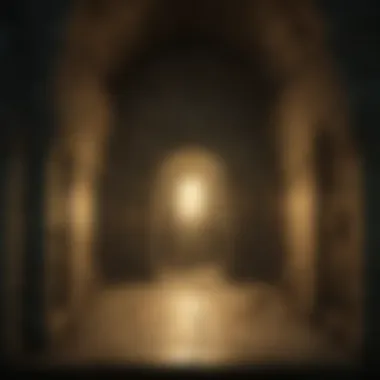
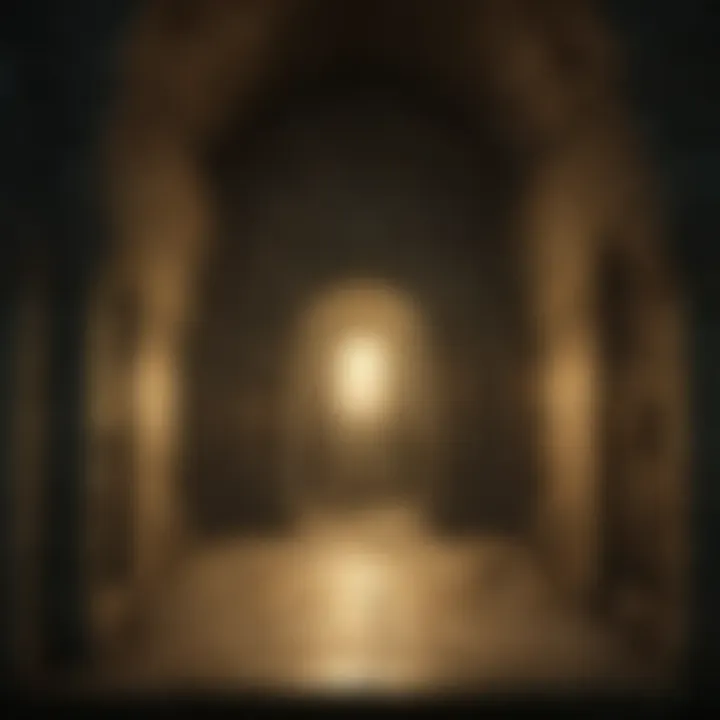
Gamepad Features
Inventory Management
A standout feature of the Wii U version is the innovative inventory management system that utilizes the GamePad’s touchscreen. This allows players to navigate through their items seamlessly, placing tools like bombs or potions directly onto the touch interface. One of the key characteristics of this approach is how it simplifies the gameplay. Instead of pausing the game to manage supplies, players can quickly access what they need in real-time.
This setup has proven to be a beneficial choice for the game. The tactile nature of touch controls feels natural and engaging, aligning well with modern gaming sensibilities. While there can be a learning curve—players need time to adjust to using the GamePad effectively—the advantages are clear. It grants players the flexibility to strategize on the fly, which is invaluable in intense combat situations.
Map Usage
The map will have a prominent place in guiding players through the sprawling territories of Hyrule. The unique feature of this map usage is the ability to interact with it directly on the GamePad’s touchscreen, rather than navigating menus through button inputs. This smooth interaction makes it easier to plot routes and manage objectives without interrupting the gameplay flow.
Its design serves as both an advantage and a mild drawback. On the plus side, the map's accessibility reduces frustrations with exploration, allowing players to keep their focus on the adventure. On the downside, some players may find the reliance on a second screen distracting, as it splits their attention during crucial gameplay segments. However, the overall contribution of the map to game deliverance can hardly be overstated.
Performance Improvements
As developers harnessed the capabilities of the Wii U, they achieved critical performance improvements that made the gameplay experience smoother than ever. The frame rates stabilized, reducing lag during intense battles, which can be crucial to maintaining immersion. The load times were significantly cut down as well, allowing players to dive back into action without feeling interrupted.
Overall, these enhancements added a polished finish to Twilight Princess, creating a seamless experience that respects both the legacy of the franchise and the expectations of modern gamers. This combination not only showcases how far game development has come but also how nostalgia can be interwoven with new technology to offer something that feels both familiar and exciting.
Community Reception
The community's reception of Twilight Princess is not just a sidebar to the gaming discourse; it is the heartbeat of its lasting legacy. Players have always had a way of interpreting and critiquing their experiences, which enriches the narrative surrounding a particular title. This section dives into the critical reviews and user feedback that echo through forums and discussions, laying bare what gamers truly think about this installment in the Zelda series.
Critical Reviews
When Twilight Princess first graced the shelves, critics were ready, pens poised to analyze every pixel and plot twist. The reviews were overwhelmingly positive, highlighting the game as a significant entry in the franchise. IGN lauded the emotional depth and immersive gameplay, while GameSpot emphasized the engaging storyline that manages to intertwine themes of light and darkness without falling into melodrama.
- Graphics and Atmosphere: Many critics raved about the dark, moody aesthetic which was a stark contrast to its predecessor, The Wind Waker. The more mature tone resonated with a vast audience eager for a change.
- Gameplay Mechanics: Critics praised the introduction of wolf transformation and the duality of Link’s character, allowing for varied gameplay experiences.
- Narrative Complexity: The narrative was noted for its maturity and depth, tackling heavier themes while still being accessible.
Some reviewers pointed to pacing issues in the latter stages, suggesting a few segments felt stretched. But overall, the consensus painted Twilight Princess as a masterstroke in game design, merging action and story with finesse.
User Feedback
User feedback is where one can find the beat of the player community's heart. Forums like Reddit lit up with discussions about favorite moments, character portrayals, and overall gameplay experiences. Gamers often highlighted:
- Character Dynamics: Link and Zelda's relationship was analyzed in-depth. The evolution of their bond throughout the game sparked numerous fan theories about deeper meanings.
- World Exploration: Players enjoyed the expansive environments, often sharing tips on treasure hunting and the best methods for combat. Many remembered the game's vast array of side quests fondly—each one a breadcrumb leading to greater involvement in Hyrule’s story.
- Adaptation to Controls: A common thread amongst older gamers was the adjustment to the Wii U GamePad, some embracing it while others found it took time to get used to.
The fan art and video essays that proliferated online underscore how deeply Twilight Princess resonated with players from diverse backgrounds. While some issues about control and pacing came up, the emotional connection many felt with the game often overshadowed these criticisms.
Legacy and Influence
The ripples of Twilight Princess continue to affect the landscape of video games well beyond its initial release. In many ways, it set the stage for future titles in the franchise and beyond.
"Twilight Princess didn't just expand the Zelda universe; it challenged the definitions of storytelling in games."
The impact of the game seen in subsequent Zelda titles can’t be overstated:
- Narrative Depth: The ambition of crafting a diverse narrative continued in Breath of the Wild, pushing boundaries of player freedom while still holding narrative weight.
- Aesthetic Choices: Several games after Twilight Princess adopted a similar darker tone, enriching the medium's capacity for emotional storytelling.
- Community Engagement: The encourage users to create fan works, whether it's through art, cosplay, or entirely new storylines, are a testament to how excited the community became about Twilight Princess. This engagement has contributed to a thriving community around the Zelda franchise.
In summary, the game's reception has not just remained a momentary discussion point; it has woven itself into the fabric of gaming culture, marking its territory as a beloved classic.
Ending
Wrapping up the comprehensive analysis of Twilight Princess on Wii U invites us to reflect not just on the game itself, but on its broader significance in the ever-evolving landscape of the Zelda franchise. This title is often noted for its darker and more mature themes, setting the stage for a richer narrative experience that resonates with players. The unique blend of gameplay mechanics and storytelling has cemented its place as a hallmark in the series, demonstrating how a game can be both an escape and a profound commentary on human nature.
Final thoughts encourage a deep appreciation of how Twilight Princess embraces the essence of adventure, connecting players not only to Link's heroic journey but also to their own personal adventures. The game serves as a reminder that the bond between player and character is crucial, moving beyond mere gameplay into the realm of personal connection and emotional engagement.
Final Thoughts
As we digest the myriad elements of Twilight Princess, it's clear that the game is more than just a platform for enemies and puzzles. The artistry woven into its design transforms every quest into an experience, making it meaningful for both seasoned enthusiasts and newcomers to the franchise. The intricate world of Hyrule invites exploration and rewards curiosity, a testament to the talents of the developers who breathed life into this pixelated universe.
Additionally, character arcs, especially Link's transition into his wolf form, showcase outstanding narrative depth. Players uncover layers of storytelling that speak volumes about courage, sacrifice, and the struggle between good and evil. This complexity is not widely found in video games, positioning Twilight Princess as a leading contender in the role-playing landscape.
"A good game should take you on a journey unlike any other, checking all the boxes to engage players in feeling and thought."
The Future of the Zelda Franchise
Looking ahead, the Zelda franchise seems poised to continue its legacy of innovation while honoring its roots. The enthusiasm surrounding recent releases suggests that there is an eager audience for both remasters and entirely fresh concepts. Twilight Princess, with its rich narrative and gameplay features, has laid a foundation that newer titles can build upon. The learned lessons about character depth and world design likely will inform future entries.
Factors such as technological advancements offer exciting possibilities. The evolution from Wii U to the Nintendo Switch has shown how graphics and mechanics can be enhanced, providing a richer playing experience. Developments in player interaction and storytelling highlight the way forward for the franchise. Fans and critics alike eagerly anticipate how the balance of tradition and innovation will unfold in coming projects. The Zelda saga is, without a doubt, far from over. The next chapter awaits to be written in the hearts and minds of gamers around the world.







